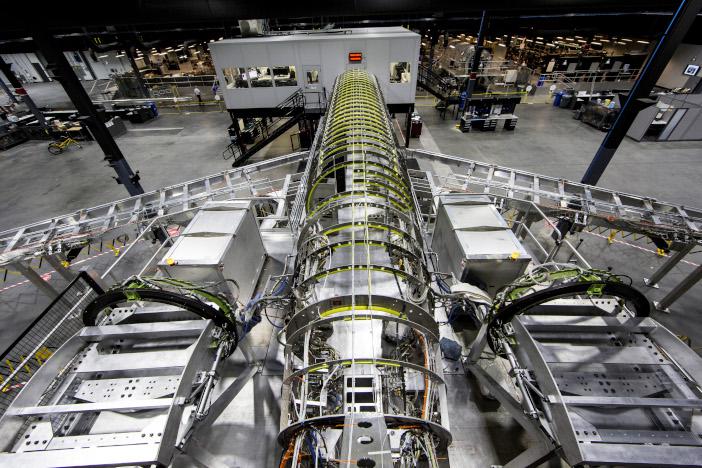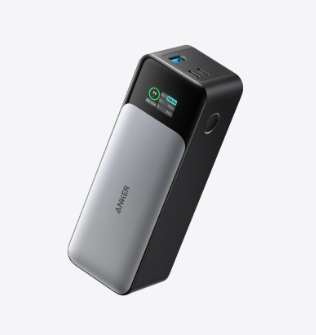Aircraft testing
Characteristics of the test
The flight mission to be completed by the aircraft and its characteristics determine the characteristics of the test: ①The test of the aircraft is closely related to modern advanced science and technology: for example, the supersonic wind tunnel test Technology and holographic photography technology have been widely used in the aerodynamic test of aircraft; microwave communication technology, microelectronics technology, high-speed computer, laser technology and high-precision optical machinery all provide important means for aircraft testing; environmental simulation technology and environment Engineering research provides a technical basis for the environmental test of aircraft. ②The scale and cost of the test are huge, the preparation time is long, and the test area is wide: for example, driving a continuous supersonic wind tunnel with a Mach number greater than 10 and a test section diameter of 2 to 3 meters requires up to 160,000 kilowatts of power. A space shuttle conducted a total of about 100,000 hours of wind tunnel experiments. ③Many coordination tests: The aircraft is composed of many sub-systems, and there are many single aircraft and components. The problem of incoordination between them usually depends on multiple coordination tests among single aircraft (or components), between sub-systems and the whole system. Discovery and resolution.
Test procedures
According to the test objects, the test of aerospace vehicles can be divided into four levels: parts and components test, single machine, component test, sub-system test and full-system test. Simple low-level tests gradually transition to complex high-level tests. Low-level tests lay the foundation for high-level tests and reduce the number of high-level tests to save test costs. For simple aircraft, the level of testing is reduced accordingly. As far as the nature of the test is concerned, the ground test will be carried out first, and then the flight test will be carried out. The test of the aircraft starts with the verification of the design in the laboratory. During the design process, the simulation computer and digital computer (sometimes with some real objects) are used to perform simulation tests to assist the design work, and to help select the best of the various sub-systems and the whole system of the aircraft. Parameters and schemes. This method is much more economical than the prototype test, but it cannot completely replace the prototype test. When the development work progressed to the product trial-manufacture stage, it began to turn to physical simulation tests under controlled conditions to verify the correctness of the design. Finally, a system-wide test is carried out under predetermined real conditions to verify whether the aircraft meets the design specifications.
Aircraft test content
The characteristics and development procedures of various aircraft are different, and the test content is also different, but the following various tests are required for most aircraft.
Aerodynamic test
Flying in the atmosphere requires a good aerodynamic shape and easy manipulation. Almost all aircrafts undergo aerodynamic tests in the wind tunnel after the initial shape selection. A scaled model is often used for the test piece, and a full-size model is sometimes used. The test speed is divided into low sound speed (the relationship between the 0 Mach number and the aerodynamic parameters of the aircraft, and often requires different density and temperature of the airflow, and even higher Reynolds number. The flight characteristics of different types of aircraft are different, so the selected The contents of wind tunnel and wind tunnel experiments are also different. For example, a special tail cyclone wind tunnel is required to evaluate the flight characteristics of the airplane's tail spin (see wind tunnel experiment technology).
Structural test
The structure of the aircraft is complex and it works in harsh environments. In order to reduce the weight, the safety factor of the structural design is generally small, and the strength and rigidity are not much surplus. In addition, the dynamic characteristic parameters of the overall structure of the aircraft are often difficult to accurately calculate. The test has become an indispensable item in the aircraft test. Structural tests include static test, dynamic test, fatigue test and thermal strength test. These tests can accurately determine the dynamic characteristics of the aircraft structure and the structure and components in various environmental conditions and The load-bearing capacity under load verifies the accuracy of the structural design. The static, dynamic and fatigue tests of aircraft are generally carried out in full-scale, but rockets generally do not perform full-scale static tests, but are carried out in sections. The full-scale structure or scaled model is used for the characteristic test.
Environmental test
The aircraft will encounter various complex environments during storage, transportation and operation (see Aircraft Environmental Engineering), These harsh environmental conditions often act on the aircraft in a comprehensive manner, thereby forming a combined environment of the aircraft. Environmental testing has become an important means to test the adaptability of the aircraft to the environment and improve the reliability (see aircraft test, rocket test, and spacecraft test). There are many environmental test items. For example, the life-saving system of a carrier-based aircraft must be operated underwater and its working conditions must be checked; the rain-draining, anti-icing, and de-icing equipment of the aircraft must be tested in an environmental laboratory to check its functions; Carry out space environmental tests, such as thermal vacuum tests, magnetic environmental tests, etc. Some systems and components of aircraft sometimes require rocket trolley tests. Some of the environments encountered by aircraft are difficult to simulate on the ground at the same time, such as acting on The environmental conditions of the intercontinental missile warhead that reenter the atmosphere include high temperatures of several thousand to ten thousand degrees Celsius and a heat flux density of nearly 100,000 kilowatts per square meter (tens of thousands of kilocalories per second square meter), as well as a speed greater than 20 times the speed of sound. High-speed airflow scouring, local external pressure of nearly ten megapascals (hundreds of atmospheres), overload of dozens of times its own weight and strong vibration caused by airflow, and it may also encounter clouds, rain, snow, nuclear radiation, electromagnetic pulses and shock waves Etc. These environmental tests can only be carried out through flight tests and nuclear tests.
Currently, vibration environmental tests of aircraft products are generally completed through vibration test benches, that is, through direct physical prototypes or actual products. Test and test, visually observe and evaluate the response and performance of the real object under different vibration excitations, and then improve the design scheme based on the test results. However, the vibration environment test based on the shaking table also has the following limitations: (1) Implementation of vibration test The cycle is long and the cost is huge; (2) It is difficult for the test bench to fully simulate the real vibration excitation Excitation, it is prone to test or under-test problems; (3) It is difficult to simulate all working conditions on the test bench; (4) Vibration test is limited by the number of sensors and installation location, and the test result information that can be obtained is limited; (5) Based on The design verification and improvement of the vibration test has great limitations. The design improvement can only be done through trial and error, and it is difficult to optimize; (6) For some large-scale structures, full-scale vibration test is difficult to implement on existing equipment .

The aerodynamic heating test is a ground simulation test that simulates the forced convection heat transfer caused by the relative movement of air and the aircraft surface by means of radiant heat. There are essential differences in the heat transfer mechanism, but from the study of structural characteristics For the purpose of the experiment, the equivalent relationship between the two can be established by truly simulating the heat transfer mode on the surface of the structure. The control system of the pneumatic heating transient test has a built-in pneumatic heating engineering calculation program, and the load control is performed through the calculated instantaneous heat flux density. The aerodynamic heating engineering calculation program completes the calculation of the outer edge parameters of the aircraft surface boundary layer based on the incoming flow parameters provided by the flight trajectory, and uses the Renault analogy to obtain the heat flux density of the aircraft surface, and then uses the heat flux density to load the test piece in real time to achieve Aerodynamic heating simulation of hypersonic vehicle. The accuracy of the test depends on two aspects: (1) the accuracy and sensitivity of the measurement and control equipment; (2) the accuracy of the calculation results of the pneumatic heating engineering.
Reliability and life test
There will be many unforeseen problems when flying in the sky, such as: airflow, thunder and lightning, etc., which will have a vital impact on the aircraft , Will also have a vital impact on personal safety.
The reliability test of the aircraft accounts for a larger proportion of the entire test and costs more. For an aircraft that is composed of thousands of components and components and works in a harsh environment, the failure of one component may cause the entire aircraft to malfunction. It is very important to improve reliability, especially the reliability of manned aircraft. In addition to taking measures to improve reliability in design and strict quality control in the manufacturing process, reliability testing is also required to expose and solve the remaining problems in design, manufacturing, and raw materials. Reliability screening tests are generally required for the components, electronic instruments, and equipment used on the aircraft, and the failure rate level that the products after screening should reach. During the test, use external loads (such as high temperature, thermal shock, temperature cycling, mechanical vibration and shock, high-voltage electricity, etc., or a combination of several conditions) to eliminate potential early failure products or products with poor quality. The items and sizes of the external loads are determined according to the main failure modes and mechanisms of the specific equipment, combined with the process, materials, and production quality control. At the same time, it also considers the reliability level requirements and use conditions, such as spacecraft and spacecraft that cannot be repaired or replaced during flight. Rocket equipment is subject to Class A screening test, and avionics equipment is generally screened according to Class B. In order to evaluate the reliability of the system and the entire aircraft, it is also necessary to perform reliability appraisal and acceptance tests on the equipment, sub-systems, and the entire aircraft that have been screened and determined to be installed in the aircraft. In order to save costs, this test is usually combined with work life test, storage life test, environmental test and other tests.
The life requirements of various aircraft vary greatly. Aircraft require multiple and long-term use; rockets are stored for a long time and used once; and other spacecraft except for the space shuttle are launched once and work for a long time. Therefore, their life test content and methods are different.
Ground Interview Vehicle
For powered aircraft, the engines must be tested on the test bench under ground conditions and simulated high-altitude conditions (see Aero Engine Test, Rocket Engine Test), After gradual modification, the engine performance reaches the design index. Then combine the propulsion system (or power plant) of the entire aircraft together for a test run. Aircraft engines must also be tested in various working conditions and taxiing tests. The spacecraft is mounted on a launch vehicle for a full-system rocket test vehicle, which can be tested with rated thrust or increased engine thrust. After various ground tests and repeated improvements, the defects of the aircraft and the unsafe factors affecting the flight test can be reduced to a minimum.
Flight test
The aircraft must pass the flight test to finally prove whether it can complete the scheduled flight mission, and use this as the basis for finalization. Aircraft flight tests and rocket (missile) flight tests generally test the overall plan first, then appraise the performance, and finally perform the performance assessment. The flight test of aircraft with or without manned, single or multiple use varies greatly, and the stages of flight test and test methods are different.
Test method
Make the aircraft in a test state under predetermined conditions, and measure and record various physical phenomena, environmental parameters and operating parameters that represent its characteristics. Aircraft testing generally uses high-speed cameras and video recorders to record the flight status. Various parameters on the aircraft are measured by sensors, and the aircraft also uses some instruments for direct measurement and display (pictured on the right). These parameters must also be recorded on board or on the ground with photographic recorders, oscilloscopes, magnetic recording systems, and telemetry systems (see telemetry technology), and optical and radio tracking measurement systems for aircraft orbit tracking and parameter telemetry. The unified time system is used to unify the time of each station such as the command, control, tracking, and measurement of the experiment, so that all measured data become a function of the unified time.
Test equipment
In order to make the aircraft in the test state, two types of equipment are needed: One type is equipment that provides test environment conditions such as shaking tables, space environment simulators, and aircraft environment test chambers. Etc., as well as various data acquisition, processing and recording equipment; the other is various special equipment, general equipment and support equipment that provide test support, such as rocket test benches, test airfields, and ground support equipment.
Development and Application
India will carry out repeated use of aircraft tests
Senior officials of the Indian Space Research Organization (ISRO) said that India is studying reuse technology and plans to In March 2015, a flight test was carried out on the Reusable Vehicle Technology Demonstrator (RLV-TD) with wings. Currently, ISRO is working on the integration of RLV-TD. RLV-TD includes a series of technical verification tasks, which will be the first step of a fully reusable two-stage orbit vehicle plan. Currently, ISRO has formulated 4 flight tests for RLV-TD: Hypersonic Flight Test (HEX), Landing Test (LEX), Return Flight Test (REX) and Transcendent Punching Power Test (SPEX).
In March, RLV-TD will carry out a hypersonic flight test. The RLV-TD has a mass of 12t. After a 9t solid booster (S9) is used to push and launch to a certain height, the aircraft and the booster are separated for hypersonic reentry flight. The aircraft glide unpowered in the atmosphere, after which the parachute is opened, and finally recovered at sea. The objectives of this test include: verifying the aerodynamic design characteristics during hypersonic flight; describing the load characteristics during hypersonic reentry; recovering the test aircraft at sea; evaluating the performance of carbon fiber used in the head of the aircraft; demonstrating the first-level separation sequence .
Overseas progress in the thermal modal test of hypersonic aircraft structures
The hypersonic aircraft undergoes severe aerodynamic heating effects during the cruise/reentry phase, and extremely high temperatures and temperature gradients change the aircraft The thermophysical parameters and mechanical properties of the structure lead to a decrease in structural bending and torsional stiffness, and a lower flutter safety margin, which affects the reliability of the aircraft structure. The structural modal characteristics in a thermal environment, as an important parameter reflecting the influence of aerodynamic heating on the structure, are of great significance in guiding and verifying the design of this type of aircraft. Since the middle of the 20th century, research centers such as NASALangley and Dryden have carried out thermal modal test method research and experimental verification for metal and composite wall panels, X-15 wing rudders, X-34 engine nozzles and other structures. Recently, the Dryden research center has focused on X-37 rudder conducts exploratory research on thermal modal test.
The thermal modal test research has been going on for more than 60 years since it started in the 1950s. After research and analysis by a large number of scholars, the following conclusions can be drawn: (1) The influence of thermal environment on the dynamic characteristics of the structure is mainly reflected in two aspects. The influence of stiffness; (2) Through simulation and experiment verification, when the temperature gradient is large, the influence of thermal stress on modal parameters must be considered; (3) The accuracy of aerodynamic thermal distribution simulation will directly affect the structural thermal stress distribution and mode The correctness of the state parameters, but when the ground test is difficult to fully reproduce the actual flight thermal environment, the thermal modal test can still give qualitative guidance; (4) In the lower temperature range, the small deformation theory can more accurately predict the structure Modal parameters, but with the continuous increase of temperature, the structure will undergo nonlinear changes such as thermal buckling and thermal deformation. Although the use of large deflection equations can effectively improve the calculation results, the calculation accuracy is still difficult to guarantee.
Construction of aircraft virtual vibration test platform
For the problems of long test period, high cost, and prone to over-test or under-test when using vibration table for aircraft vibration environment test, virtual Reality technology has established a virtual vibration test platform for aircraft.
Virtual vibration test refers to the establishment of a vibration test bench model and a model of the tested part through a software environment. The virtual simulation model based on the vibration test bench and the tested part in the software environment is the same as or similar to the actual vibration test. The task of vibration environment test. The construction of the aircraft virtual shaking table system is based on the composition structure of the actual shaking table, that is, the models of the shaking table body mechanical system, the vibration control and excitation system and the tested part are established in the software environment, and the various parts are integrated to form an electromechanical combination Simulation environment. There are two ways to construct a virtual shaking table system. One is open-loop modeling based on linear finite element methods, mainly for system-level vibration analysis; the other is closed-loop modeling based on multi-body dynamics and electromechanical co-simulation. Mainly carry out electromechanical coupling analysis and rigid-flexible coupling analysis.
Through the integration of multi-disciplinary simulation, the electromechanical synthesis method is used to establish a complete closed-loop model of the shaking table. When the multi-body dynamic model of the vibration table is integrated with the vibration control model and the electromagnetic model, on the one hand, the vibration table model feeds back the acceleration response of the table to the controller model of the vibration table, and compares it with the expected acceleration. After control calculation and amplification Get the voltage signal. The voltage signal is further transmitted to the electromagnetic model, thereby generating the corresponding vibration excitation force. The vibration excitation force is transferred to the multi-body model of the vibration table mechanical system through the interface, thus forming a closed loop. In the electromechanical synthesis method, the model of the test piece is a flexible body model, which is assembled and coupled with the multi-body model of the vibration table in a software environment. The flexible body model is subjected to test correlation analysis and model modification before the electromechanical co-simulation to ensure the accuracy of the results. The advantage of this method is that a complete closed-loop model of the shaking table can be established, and the mechanical structure design, control law and controller parameters, electromagnetic system parameters of the shaking table, etc. can be systematically studied through integrated multidisciplinary simulation.
Ground test method of hypersonic vehicle
The ground test of hypersonic vehicle can solve the following problems: (1) Ground aerodynamic test, which mainly solves the aerodynamic design of geometric shape and the working problems of engine components. The overall operating characteristics of the engine, and the matching of the engine and the aircraft. Specific tests include: direct connection test, free jet test, and impact test of airflow parameters on the engine; (2) high-temperature material performance test under typical environment, solving high-temperature ablation and high-temperature thermal protection of materials; (3) hypersonic typical The flight environment test solves the impact of the comprehensive mechanical environment of the flight process on the structure of the aircraft, the structural integrity of each component, vibration, shock, testing and control sensors.
The main ground test methods include wind tunnel test and rocket sled test.
(1) The aircraft test items carried out in the hypersonic wind tunnel generally include the following items: full model force test, pressure distribution test, hinge torque test, dynamic stability test, jet interference test , Interstage separation or multi-body separation test, hypersonic inlet test, simulated free flight test, etc. The wind tunnel test mainly carries out the component-level or principle-level tests at the initial stage of development. There are mainly effects such as size, Reynolds number, and temperature. At the same time, there are still "polluting" gases that will affect the test results of the combustion chamber, mainly due to turbulence and gas composition. Influence, make the already complicated supersonic combustion problem more complicated. In addition, the general wind tunnel test can only study the "pulse" starting problem and the "self-starting" ability of the intake port at a Mach number. But wind tunnel test is still an indispensable test method in the early stage of development.
(2) Rocket sled test is an important ground test method in the development process of hypersonic vehicle model, and it is a test between laboratory test and flight test. The most important feature of the system is that it can simulate the speed and acceleration required by the test piece. Using this test method, not only can the performance of the entire hypersonic aircraft and its components be assessed, but also their adaptability and reliability to the high-speed flight environment. Its flight envelope can basically cover flight tests, and it is the most effective test system that can be assessed by 1:1 test pieces. It can recover the tested test pieces on orbit without damage for further laboratory analysis; it is the development of hypersonic weapon system The indispensable ground test system in the process is to measure, evaluate, verify, and assess the rationality of the hypersonic engine intake port design, low-altitude and high-Mach number "pulse" starting and "self-starting" capabilities, anti-ablation design and engine integration Critical ground test system such as performance. The national type tests of American ramjet engines are all done by using rocket sled tests.
Due to the complex physical phenomena caused by hypersonic flow, the hypersonic rocket sled test is significantly different from the low-speed rocket sled test in the following three aspects: aerodynamic forces (lift, drag, and torque will be significantly greater, pressure Center position change, etc.); aerodynamic heat (the heat flow is obvious, calculations and heat protection measures are required, etc.); aerophysics (obvious shock wave shape and flow field photoelectric characteristics will appear at high speed).
Latest: signal cable
Next: vdsl








